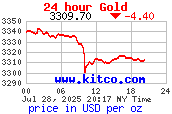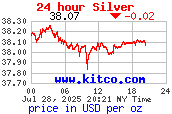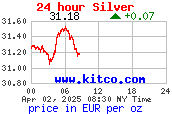Apogee Provides Update on Trial Mining and Production Plans at its Pulacayo Deposit
TORONTO, ONTARIO -- (Marketwire) -- 12/08/11 -- Apogee Silver Ltd. ("Apogee" or the "Company") (TSX VENTURE:APE) announced it has successfully commenced trial mining operations in October 2011 and struck ore one month ahead of schedule (See Press Release dated May 25, 2011) at its 100% controlled Pulacayo project situated in southern Bolivia (Figure 1).
During the months of October and November 2011, trial mining operations resulted in the extraction of approximately 500 tonnes of ore and additionally advanced the three development drifts being mined a total of 32 meters. The ore mined has been delivered to two surface stockpiles to be treated in the pilot concentrator, which will be commissioned by the Company in late 2012. Initial sampling results from the low grade stockpile, consisting of approximately 250 tonnes of ore, indicates a silver grade of approximately 3 ounces per tonne. Sampling results from the high grade stockpile, also consisting of approximately 250 tonnes of ore, indicated a silver grade of approximately 10 ounces per tonne. Approximately 400 tonnes of ore originated from historical underground workings that were cleaned out as part of the rehabilitation of the mine. The Company may elect to transport some of the ore for toll milling at nearby concentrators in the event financially beneficial toll milling terms are negotiated.
Production rates are expected to increase as the new mining teams complete their on-the-job training. Currently, the trial mining method employed by the Company is conventional, using hand-held jackleg drills (Figure 2), rail bound locomotives (Figure 3) and hydraulic shovels for cleaning. In order to further develop the pilot plant, the Company intends to acquire two larger, eight tonne locomotives and 16 mine cars with capacity of five tonnes, which are on order from Peru. Delivery of this equipment to Pulacayo is expected by March, 2012. A reconditioned trackless mining fleet consisting of two scoop LHD's, a twin jumbo drill rig and a 20 tonne dump truck has also been sourced from Sudbury in Canada. The equipment is currently being refurbished in Canada and is scheduled for shipping to site in January 2012. The mining plan currently includes drifts that target three separate silver bearing veins in close proximity to the San Leon tunnel (Figure 4). Unverified underground sampling results from these veins are showing significantly higher grades than the average resource grades previously reported (See Press Release dated October 18, 2011).
In response to these positive developments, Chief Executive Officer Neil Ringdahl stated, "The resource at Pulacayo continues to exceed our expectations as we develop the mine. Apart from finding previously un-mined veins underground that were not picked up in earlier drilling campaigns, we also remain cautiously optimistic that first stopes we are targeting could contain higher silver grades than the average grade of the previously reported resource estimate. If our team is able to extract this ore with minimum dilution, the Company may see a potential significant near-term upside when the ore is treated in its pilot plant which we plan to bring into production in the fourth quarter of 2012."
New employees for the trial mining project have been recruited predominantly from Pulacayo and the communities surrounding the property. Currently the Company employs approximately 84 Bolivian employees, of which 42 are employed directly from the local communities.
Pilot Concentrator & Permitting
Current mining activities are taking place under the current exploration environmental permit, which allows for extraction rates of up to 200 tonnes of ore per day. Apogee plans to construct and commission a 400 tonne per day capacity pilot base and precious metals concentrator at Pulacayo in 2012. The detailed engineering and design for the concentrator (Figure 5) is nearing completion with final signoff expected by the end of this year. The Engineering, Procurement & Construction Management contract was awarded in June 2011 to TWP Sudamerica S.A., an international engineering firm with worldwide experience (refer to further information below).
Upon receipt of the necessary environmental permits, the Company anticipates that construction with respect to the development of the project will begin, as planned, by June 2012. Orders have been placed for the long lead items including the ball mill and crusher. The Company is currently in negotiation with several Bolivian based companies for the steelwork and civil construction contracts.
The Company is also pleased to announce that the environmental permitting process for the concentrator is progressing on schedule. In the first part of this application, Apogee received a lower-risk environmental categorization or "ficha ambiental Level 2" from the authorities. In anticipation of speeding up the process, the Company already prepared its Environment Impact Study (EIS) in such a way that environmental mitigations to be used will exceed the required standards. The independent Bolivian environmental auditing company Fundacion Medmin has been hired by Apogee to facilitate the process and make recommendations to both the Company and the authorities in respect of the environmental permit. Apogee expects to receive the environmental permit for the pilot concentrator on schedule in May 2012 (See Press Release dated May 25, 2011).
Quality Control
Apogee Silver employs a QA/QC protocol on all aspects of its sampling programs and analytical procedures.
Analyses of all surface and underground diamond drill hole and surface channel samples taken for inclusion in mineral resource estimates are completed at the accredited facilities of ALS Chemex at Oruro, Bolivia and Lima, Peru. All HQ and/or NQ core samples are sawn with one half returned to the core box for future reference and the other half sent for analysis. The quality control protocol includes the insertion of certified geological standards and field blanks at a frequency of 1 every 20 samples. Field duplicates are taken at a frequency of 1 every 50 samples. Sample preparation duplicates are taken at the crushing and pulverizing stages at a frequency of 1 every 20 samples. Cross-check analysis is undertaken on 5% of all samples at the accredited facilities of SGS Mineral Services in Lima, Peru.
In order to achieve the analytical turnaround time required to facilitate geological control on underground development mining, samples from selected underground diamond drill holes and channels at the face are submitted to M.J. BECKET Servicios Analiticos de Minerales y Metales of Oruro, Bolivia for analyses. This lab is not accredited. These drill core samples are 35mm in diameter, which prohibits sawing, and the entire sample is sent for analysis. The quality control protocol on these samples includes the submission of certified geological standards and field blanks at a frequency of 1 every 20 samples. The analytical pulps are retrieved for future cross-check analysis and validation at an accredited laboratory should they be required for inclusion in resource estimates.
The Quality Control and all aspects of the exploration program are supervised by Apogee Silver Limited's Exploration Manager Mr. Hernan Uribe, who holds a Masters of Applied Science in Mineral Exploration from the Imperial College of Science And Technology, Royal School of Mines, London, England under the supervision of Mr. Chris Collins, P.Geo., President of Apogee.
All scientific and technical information presented in this press release has been reviewed and approved by Chris Collins, P. Geo., President of Apogee Silver and a qualified person, as defined by NI 43-101.
For more detailed project information please refer to Apogee's web site at www.apogeesilver.com.
TORONTO, ONTARIO -- (Marketwire) -- 12/08/11 -- Apogee Silver Ltd. ("Apogee" or the "Company") (TSX VENTURE:APE) announced it has successfully commenced trial mining operations in October 2011 and struck ore one month ahead of schedule (See Press Release dated May 25, 2011) at its 100% controlled Pulacayo project situated in southern Bolivia (Figure 1).
During the months of October and November 2011, trial mining operations resulted in the extraction of approximately 500 tonnes of ore and additionally advanced the three development drifts being mined a total of 32 meters. The ore mined has been delivered to two surface stockpiles to be treated in the pilot concentrator, which will be commissioned by the Company in late 2012. Initial sampling results from the low grade stockpile, consisting of approximately 250 tonnes of ore, indicates a silver grade of approximately 3 ounces per tonne. Sampling results from the high grade stockpile, also consisting of approximately 250 tonnes of ore, indicated a silver grade of approximately 10 ounces per tonne. Approximately 400 tonnes of ore originated from historical underground workings that were cleaned out as part of the rehabilitation of the mine. The Company may elect to transport some of the ore for toll milling at nearby concentrators in the event financially beneficial toll milling terms are negotiated.
Production rates are expected to increase as the new mining teams complete their on-the-job training. Currently, the trial mining method employed by the Company is conventional, using hand-held jackleg drills (Figure 2), rail bound locomotives (Figure 3) and hydraulic shovels for cleaning. In order to further develop the pilot plant, the Company intends to acquire two larger, eight tonne locomotives and 16 mine cars with capacity of five tonnes, which are on order from Peru. Delivery of this equipment to Pulacayo is expected by March, 2012. A reconditioned trackless mining fleet consisting of two scoop LHD's, a twin jumbo drill rig and a 20 tonne dump truck has also been sourced from Sudbury in Canada. The equipment is currently being refurbished in Canada and is scheduled for shipping to site in January 2012. The mining plan currently includes drifts that target three separate silver bearing veins in close proximity to the San Leon tunnel (Figure 4). Unverified underground sampling results from these veins are showing significantly higher grades than the average resource grades previously reported (See Press Release dated October 18, 2011).
In response to these positive developments, Chief Executive Officer Neil Ringdahl stated, "The resource at Pulacayo continues to exceed our expectations as we develop the mine. Apart from finding previously un-mined veins underground that were not picked up in earlier drilling campaigns, we also remain cautiously optimistic that first stopes we are targeting could contain higher silver grades than the average grade of the previously reported resource estimate. If our team is able to extract this ore with minimum dilution, the Company may see a potential significant near-term upside when the ore is treated in its pilot plant which we plan to bring into production in the fourth quarter of 2012."
New employees for the trial mining project have been recruited predominantly from Pulacayo and the communities surrounding the property. Currently the Company employs approximately 84 Bolivian employees, of which 42 are employed directly from the local communities.
Pilot Concentrator & Permitting
Current mining activities are taking place under the current exploration environmental permit, which allows for extraction rates of up to 200 tonnes of ore per day. Apogee plans to construct and commission a 400 tonne per day capacity pilot base and precious metals concentrator at Pulacayo in 2012. The detailed engineering and design for the concentrator (Figure 5) is nearing completion with final signoff expected by the end of this year. The Engineering, Procurement & Construction Management contract was awarded in June 2011 to TWP Sudamerica S.A., an international engineering firm with worldwide experience (refer to further information below).
Upon receipt of the necessary environmental permits, the Company anticipates that construction with respect to the development of the project will begin, as planned, by June 2012. Orders have been placed for the long lead items including the ball mill and crusher. The Company is currently in negotiation with several Bolivian based companies for the steelwork and civil construction contracts.
The Company is also pleased to announce that the environmental permitting process for the concentrator is progressing on schedule. In the first part of this application, Apogee received a lower-risk environmental categorization or "ficha ambiental Level 2" from the authorities. In anticipation of speeding up the process, the Company already prepared its Environment Impact Study (EIS) in such a way that environmental mitigations to be used will exceed the required standards. The independent Bolivian environmental auditing company Fundacion Medmin has been hired by Apogee to facilitate the process and make recommendations to both the Company and the authorities in respect of the environmental permit. Apogee expects to receive the environmental permit for the pilot concentrator on schedule in May 2012 (See Press Release dated May 25, 2011).
Quality Control
Apogee Silver employs a QA/QC protocol on all aspects of its sampling programs and analytical procedures.
Analyses of all surface and underground diamond drill hole and surface channel samples taken for inclusion in mineral resource estimates are completed at the accredited facilities of ALS Chemex at Oruro, Bolivia and Lima, Peru. All HQ and/or NQ core samples are sawn with one half returned to the core box for future reference and the other half sent for analysis. The quality control protocol includes the insertion of certified geological standards and field blanks at a frequency of 1 every 20 samples. Field duplicates are taken at a frequency of 1 every 50 samples. Sample preparation duplicates are taken at the crushing and pulverizing stages at a frequency of 1 every 20 samples. Cross-check analysis is undertaken on 5% of all samples at the accredited facilities of SGS Mineral Services in Lima, Peru.
In order to achieve the analytical turnaround time required to facilitate geological control on underground development mining, samples from selected underground diamond drill holes and channels at the face are submitted to M.J. BECKET Servicios Analiticos de Minerales y Metales of Oruro, Bolivia for analyses. This lab is not accredited. These drill core samples are 35mm in diameter, which prohibits sawing, and the entire sample is sent for analysis. The quality control protocol on these samples includes the submission of certified geological standards and field blanks at a frequency of 1 every 20 samples. The analytical pulps are retrieved for future cross-check analysis and validation at an accredited laboratory should they be required for inclusion in resource estimates.
The Quality Control and all aspects of the exploration program are supervised by Apogee Silver Limited's Exploration Manager Mr. Hernan Uribe, who holds a Masters of Applied Science in Mineral Exploration from the Imperial College of Science And Technology, Royal School of Mines, London, England under the supervision of Mr. Chris Collins, P.Geo., President of Apogee.
All scientific and technical information presented in this press release has been reviewed and approved by Chris Collins, P. Geo., President of Apogee Silver and a qualified person, as defined by NI 43-101.
For more detailed project information please refer to Apogee's web site at www.apogeesilver.com.









